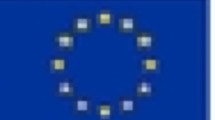Abstract
In Minkowski flat space-time, it is perceived that time inversion is unitary rather than antiunitary, with energy being a time vector changing sign under time inversion. The Dirac equation, in the case of electromagnetic interaction, is not invariant under unitary time inversion, giving rise to a “Klein paradox.” To render unitary time inversion invariance, a nonlinear wave equation is constructed, in which the “Klein paradox” disappears. In the case of Coulomb interaction, the revised nonlinear equation can be linearized to give energy solutions for Hydrogen-like ions without singularity when nuclear number Z>137, showing a reversed energy order pending for experimental tests such as Zeeman effects. In non-relativistic limit, this nonlinear equation reduces to nonlinear Schrödinger equation with soliton-like solutions. Moreover, particle conjugation and electron-proton scattering with a nonsingular current-potential interaction are discussed. Finally the explicit form of gauge function is found, the uniqueness of Lorentz gauge is proven and the Lagrangian density of quantum electrodynamics (QED) is revised as well. The implementation of unitary time inversion leads to the ultimate derivation of nonlinear QED.
Similar content being viewed by others
REFERENCES
E. P. Wigner, Nachr. Akad. Wiss. Göttingen, Math.-Physik, 546 (1932).
E. P. Wigner, Group Theory (Academic, New York, 1959).
E. P. Wigner, Symmetries and Reflections (Indiana University Press, Bloomington, 1967).
A. Einstein, The Principle of Relativity (Dover, New York, 1952).
P. A. M. Dirac, Proc. Roy. Soc. A117, 610 (1928); A118, 351 (1928).
O. Klein, Z. Phys. 53, 157 (1929).
J. D. Bjorken and S. D. Drell, Relativistic Quantum Mechanics (McGraw–Hill, New York, 1964).
P. Zeeman, Phil. Mag. (5) 43, 226 (1897); (5) 44, 55, 255 (1897).
H. A. Lorentz, The Theory of Electrons (Dover, New York, 1952).
P. A. M. Dirac, Spinors in Hilbert Space (Plenum, New York, 1974).
P. A. M. Dirac, The Principles of Quantum Mechanics (Oxford University Press, London, 1958).
H. Minkowski, Ann. Phys. Lpz. 47, 927 (1915).
P. A. M. Dirac, Proc. Roy. Soc. A126, 360 (1930).
C. D. Anderson, Science 76, 238 (1932); Phys. Rev. 43, 491 (1933).
W. Greiner, Relativistic Quantum Mechanics (Springer, Berlin, 1990).
W. Greiner, B. Muller, and J. Rafelski, Quantum Electrodynamics of Strong Fields (Springer, Berlin, 1985).
G. N. Lewis and F. H. Spedding, Phys. Rev. 43, 964 (1933).
F. H. Spedding, C. D. Shane, and N. S. Grace, Phys. Rev. 44, 58 (1933).
F. Paschen, Ann. Phys. (Leipzig) 82, 692 (1926).
F. Paschen and E. Back, Ann. Phys. (Leipzig) 39, 897 (1912); 40, 960 (1913).
H. E. White, Introduction to Atomic Spectra (McGraw–Hill, New York, 1934).
H. G. Kuhn, Atomic Spectra (Academic, New York, 1962).
R. P. Feynman, Phys. Rev. 76, 749 (1949); 76, 769 (1949).
N. F. Mott, Proc. Roy. Soc. A124, 426 (1929); A135, 429 (1932).
R. W. McAllister and R. Hofstadter, Phys. Rev. 102, 851 (1956).
R. N. Cahn and G. Goldhaber, The Experimental Foundations of Particle Physics (Cambridge University Press, Cambridge, 1989).
J. D. Bjorken and S. D. Drell, Relativistic Quantum Fields (McGraw–Hill, New York, 1965).
I. J. R. Aitchison and A. J. G. Hey, Gauge Theories in Particle Physics (Adam Hilger, Bristol, 1982).
Asim O. Barut, Alwyn van der Merwe, and Jean-Pierre Vigier, eds., Quantum, Space and Time·The Quest Continues: Studies and Essays in Honour of Louis de Broglie, Paul Dirac, and Eugene Wigner (Cambridge University Press, Cambridge, 1984).
W. M. Jin, “Dirac quantum fields in curved space-time,” Ph.D. Dissertation, 1999.
W. M. Jin, Class. Quantum Grav. 15, 3163 (1998).
W. M. Jin, Class. Quantum Grav. 17, 2949 (2000).
Author information
Authors and Affiliations
Rights and permissions
About this article
Cite this article
Jin, W.M. From Time Inversion to Nonlinear QED. Foundations of Physics 30, 1943–1973 (2000). https://doi.org/10.1023/A:1003714522790
Issue Date:
DOI: https://doi.org/10.1023/A:1003714522790



